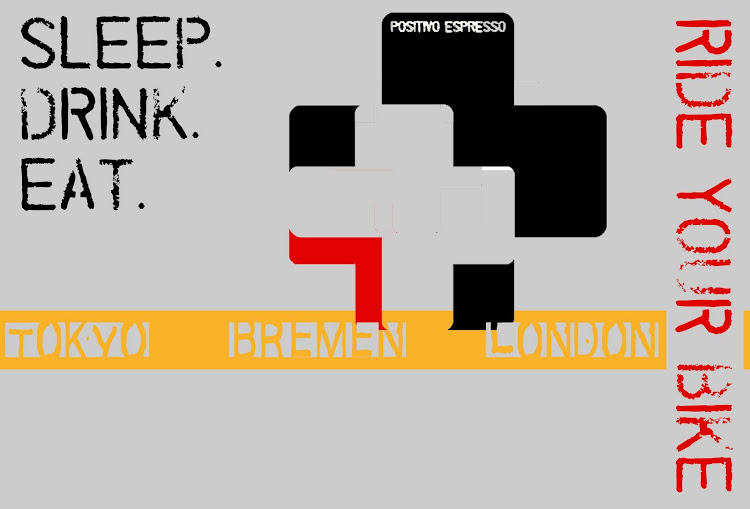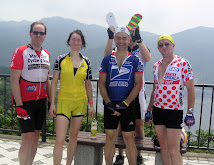A general introduction for the curious.
The League of Cycling Purity is an organisation for Proper Cyclists. Where most cycle organisations merely aim to help their members or regulate a particular aspect of cycling, the LCP aims to control all cyclists and bicycles. On the whole it has failed to do this, although it claims great success in maintaining the pitch of bicycle chains at one half inch.
This webpage is not an official publication of the LCP. As you will read below, they are not enamoured with the kind of technological progress represented by the internet. Mass communication for most of the LCP ends with the radio (valve, amplitude modulation) although some members did buy a television for the coronation. The information presented here comes from publications of the LCP and talking to its members.
Rules about members
Members must own at least one bicycle. All bicycles owned by a member must conform to the rules of the League. A member’s cycle house may be inspected at any time without warning by the League’s Special investigation department. For this reason, members are advised to register any impure cycles owned by others in their household, such as wives, children, mistresses and servants.
Cycles are to be mounted in the gentleman’s fashion, from the left, unless the man is left handed or during formation exercises.
Clothes must be of natural fibres, (cotton, silk and wool) or leather. The fit should be close, but never tight. Colours should be subdued and blend in with the countryside. Socks should be black. Woollen knee stockings may be black, brown, green or russet. Waterproof rainwear of nylon or other synthetic material is permitted (rule changed in 1972).
Hair must be regularly cut and never longer than the collar. The preferred hairstyle is the short back and sides, but many members who are thin on top prefer a No. 3 or 4. Long hair is only excusable in the most extreme circumstances, such as shipwreck.
No member may wear a helmet, except when on active service or in a combat zone. (“I’d like to see one of those silly plastic hats stop a .303 round”, said Major-General Jeremy ‘Chuff-Chuff’ ffarnsworthy-Smythe (Royal Artillery) (retired).)
No member may read a new Shimano catalogue without a doctor or trained first-aider present.
Rules about bicycles
Except for the first circle, wheels must be 27”, sprint rims, or (since 1997), 700c.
Components must be approved by the club. Generally this means they should be steel and of english manufacture. Now that there are very few bicycle parts made in the UK, members are faced with the choice of making their own from lumps of metal or using European components. Some Japanese parts are permitted, but very few and definitely no post 1985 Shimano.
Where deraillier gears are used, the control levers must be mounted on the down tube. After a fierce, and, at times, violent, internal debate in 1978 it was decided that it doesn’t really matter whether the cables are run over or under the bottom bracket.
Clipless pedals are not permitted. The LCP is aware of the theoretical biomechanical efficiency gains that result from the centre of the pedal spindle passing through the ball of the foot. Some thought that the 1982 Shimano crank with this feature was a good idea, if flimsily executed. All agreed that is was a better idea than the one known previous experiment in this area, when in 1923 K.V. Brahhamlad-Vinkerton MA (Cantab.) made holes in his feet to accept the pedal spindles. Unfortunately, his garden shed was not as clean as might be desired for performing a major surgical procedure, and gangrene set in. He survived, but lost both feet. After his release from the Bethnal Asylum, he was fitted with artificial feet and continued his cycling, winning the League’s most improved rider trophy in 1933. Needless to say, his prosthetic feet had holes for the pedal spindles. K.V. Brahhamlad-Vinkerton was killed in action in 1944.
Bike shops
As one might expect, cycle shops are important to the LCP. There is an approved list of cycle shops the League regards as worthy of their custom. For simple items such as brake cables or a new bit of rubber for the inside of a Woods valve members will use any specialist cycle shop, though some of the less restrained members will mutter and curse under their breath at the flagrant displays of impure cycles.
The ideal bike shop is to be found on a secondary shopping street in a respectable working class neighbourhood or market town. It will be named after the proprietor, the proprietor’s father or grandfather. The sign will be handpainted by a long dead signwriter, the telephone number will betray its pre-Subscriber Trunk Dialing allocation by giving an exchange name rather than an area code. In the window there will be a sparse, unattractive display, with a discontinued bicycle, some empty parts boxes, obscure tools and unfashionable clothing (e.g. ‘Team Bovril’ or Milk Race).
In 1947 the LCP introduced a grading system for shops. The first class shop only sold goods approved by the Componentry Committee, the Second Class shop sold these goods and a limited range of impure products, such as wider saddles for the fairer sex, and Third Class shops were all others. In 1952 a prohibited list was added of shops which were unsuitable for members to enter. Some shopkeepers complained that they were on this list not because of their merchandise but because they had fallen out with some member of the LCP, perhaps by suggesting that they spend money and stop fondling the Airlite hubs. In 1955 a new category of First Class (exceptional) was added when Mr. G. Harmsworthy opened his shop in Bradford that took things a stage further by only selling things to the members of the LCP. This shop went bankrupt after ten months, partly due to his complete refusal to sell things mail order “I need to see the customers membership card.” It was suggested to him that he only send goods to addresses on the membership rolls of the LCP, but for some reason (sheer bloody-mindedness) he chose to disregard this suggestion.
Today there are no first class shops left in the register, and precious few second class ones. Locally, the second class shops are Common Wheel (Maryhill branch only), Wheelcraft and Willy Bain’s Bicycle Repair. The list of forbidden shops grows rapidly, including Halfords, Evans, Alpine, Edinburgh and pretty much everywhere else you have ever heard of. Special opprobrium is lavished on Kinetics on Bearsden, Glasgow, which has the temerity to sell not only recumbents and tandems, but also electrically assisted bikes. Indeed the owner once rode past a gathering of the LCP on an electrically assisted recumbent tandem, resulting in three heart attacks and one death from apoplexy. After this tragic event, the Ladies Axillary petitioned the local council to plant trees in front of this shop to prevent public decency being further outraged.
There are very few LCP approved framebuilders left, mainly because the artisans approved by the LCP are so good that their work is handed down through the generations. One such is Charles Ralph, who makes the Alves Framesets. His luxuriant growth of beard makes him ineligible for membership, but his knowledge and skill are respected. Members appreciate his total lack of advertising and inaccessible location. His workshop is in a converted goat shed at the back of his house. His house is hard to find without a six-figure grid reference. To get there one takes the Rothes road out of Elgin, doubles back toward Fogwatt, then up a single track country road, then a concrete farm track and finally a rough track to his house. Once there, assuming he is at home and not hiding in the bushes, a prolonged discussion of the required frame will ensure. Mr. Ralph will strongly advise on certain issues, “73 parallel for this frame” but be open on other matters, such as frame eyes. After several hours of looking at tubes and Nervex lugs, a specification will be agreed and a price quoted. Mr. Ralph may become upset if you ask about a guarantee, “It won’t break”.
Decision making within the LCP
The LCP is very secretive about how it is organised. There are various committees, which issue communiques and policy statements, and there may be a central board of governors, but no-one knows who they are. Some hill walkers have reported seeing groups of wool-clad men leaning on the top tubes of their bicycles in circles at the top of remote mountain passes, arguing ferociously. These are assumed to be business meetings of the LCP.
Money
Members of the LCP hardly ever spend money, but when they do they buy the best quality and expect it to last forever.
Old parts
Some members never throw out their old parts, keeping them as “spares”. it is not unknown for members to have to build new sheds to accommodate their stocks of worn out chains, hooked freewheels and chainrings and punctured inner tubes. A few members have been buried with their coffins surrounded by beds of rusting metal and perished rubber.
...continues here theleagueofcyclingpurity.com
27 April 2010
Subscribe to:
Post Comments (Atom)











1 comment:
Ha ha! Small world.
Alves cycles is just down the road from my Parents' house and still going strong. Friend bought a nice 531 Audax frame from them a couple of years back.
AlanW TCC
Post a Comment